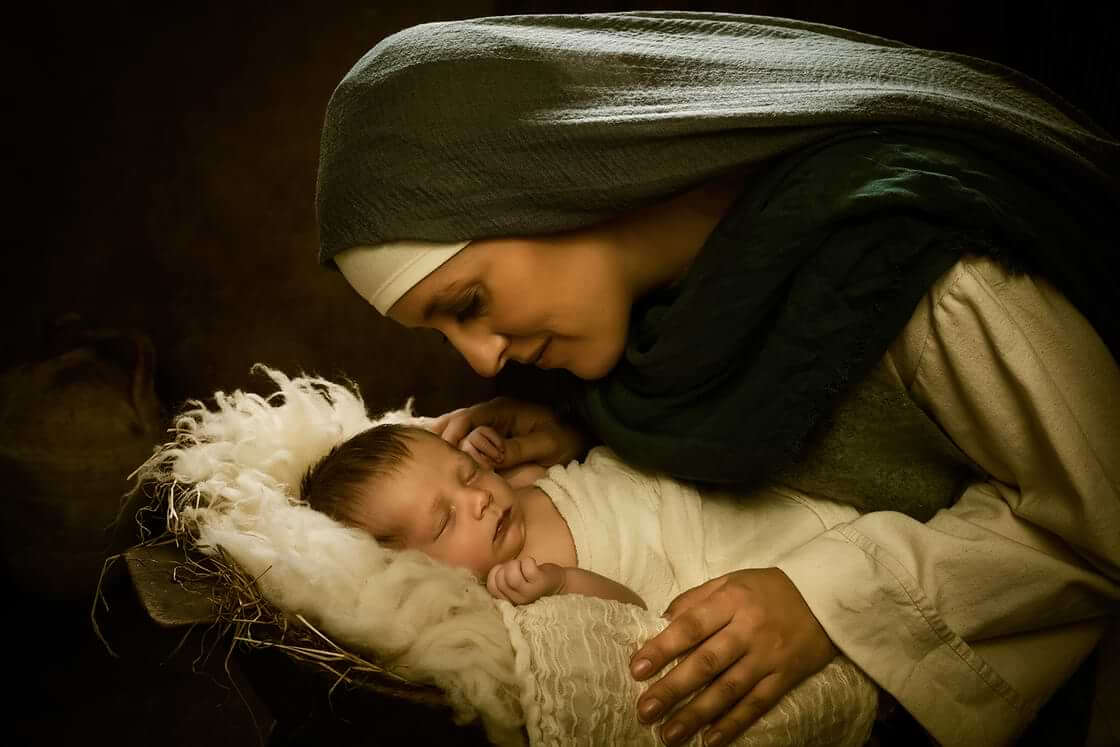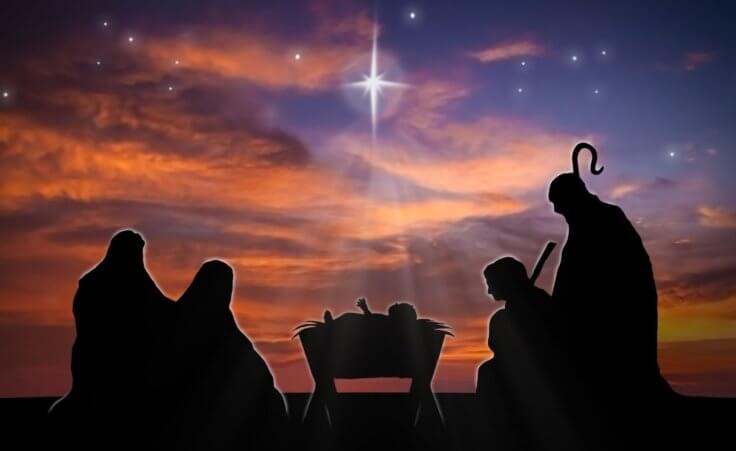
Mary hovers over newborn baby Jesus in a cotton-lined ancient crib. © By Anneke/stock.adobe.com
In 2022, the Times of Israel reported that Israeli archaeologists excavated an ancient tomb traditionally associated with Salome. Early tradition suggested that she might have been the “midwife” at Jesus’ birth in Bethlehem.
Did Mary really have a midwife for the birth of Jesus?
The question actually says more about Christmas than meets the eye.
Was three-year-old Mary fed by an angel?
This tradition began with a second-century book called the Protevangelium of James. To be clear, it does not actually claim that Salome was Jesus’ midwife. Rather, it reports that she was met by the true midwife, who claimed to have witnessed the miracle of a virgin giving birth.
Salome did not believe this could be true, so she examined Mary for herself and found that she was indeed still a virgin. She was then judged for her unbelief: “Behold, my hand is dropping off as if burned with fire.” She cried out to God for help, and she was cured.
What are we to think of this? The book also claims that when Mary was three years old, she was fed by an angel in the temple; Joseph was chosen to be her husband after a dove flew out of a rod he was holding; and a mountain was “cleft” so the infant John the Baptist could be hidden there from the murderous King Herod. The book also purports to have been written by James, a claim the early church rejected, as it did the book itself.
I tell that story to note that much of our culture views the biblical account of Jesus’ virgin birth in the same way we view the Protevangelium of James’ account of the event: an ancient tradition that is in no real sense relevant for our post-Christian day.
What I thought about Christmas
Eighty percent of American adults say they believe Jesus is the Son of God; 72 percent say he was born more than two thousand years ago in Bethlehem. However, only 63 percent of Americans consider themselves to be Christians.
In other words, millions of people who say that Jesus is the Son of God do not identify with his church and millions more dismiss his divinity altogether. Here’s my point: if we are in the first group, we are, for all practical purposes, in the second as well.
I speak from personal experience.
I grew up in Houston, Texas, in a loving home but with no spiritual life whatever. My parents had been active in their churches growing up, then my father served in World War II, where he experienced such atrocities that he did not go to church afterward. My mother honored his wishes. As a result, we never attended church and I had no exposure to the Bible.
If you had asked me as a teenager if Jesus is the Son of God, I would have said that he is. If you had asked me why we celebrate Christmas, I would have said that Jesus was born on that day. However, if you had asked me why he was born on Christmas or how his coming to earth is relevant to our lives today, I would have had no answers. My “faith” in Christ had no practical effect whatsoever on my life.
Millions of Americans are where I was.
What changed for me
Everything changed for me when two of my friends began attending a church in our community and I saw the difference their faith was making in their lives. When I was invited to their church, I met other teenagers whose lives were different as well. They had a joy, a peace, a sense of meaning that I knew I was missing.
One Sunday after Sunday school, I asked my teacher how I could have what they had and she led me to personal faith in Christ.
In the decades to follow, I earned a PhD in philosophy of religion and taught systematic theology, philosophy of religion, and Christian apologetics at four graduate schools. I have been privileged to interact with some of the most brilliant Christian thinkers of our generation. But I am convinced that our most persuasive impact on those who see Christmas as more myth than miracle is the witness of our personal lives.
There was a day when, if something was true, it must be relevant. In our postmodern world, if something is relevant, it might be true. We show those we influence the relevance of Jesus’ coming into the world when they see the relevance of his coming into our lives.
This is only natural: we are more likely to see movies and eat at restaurants our friends have tried and recommended to us. We are less likely to choose an obese fitness instructor or a dentist with bad teeth.
The good news is that, unlike fitness and dentistry, we have access to a transformational power Who can make us an example of the change the world needs to see.
“The purpose of life is a life of purpose”
When we surrender our lives daily to the Holy Spirit (Ephesians 5:18), asking him to make us more like Jesus (Romans 8:29), he answers our prayer and uses us to lead others to our Lord.
Such Christlikeness was always God’s plan for his people. The philosopher and theologian Isaac of Stella (ca. 1100–ca. 1169) wrote: “The Son of God is the first-born of many brothers. Although by nature he is the only-begotten, by grace he has joined many to himself and made them one with him.” Then he quoted John 1:12, “To all who did receive him, who believed in his name, he gave the right to become children of God.”
A. W. Tozer was right: “The full force of the Trinity in the fullness of the attributes of the Godhead is focused on making us like Jesus.” We exist to know Christ and to make him known. Everything else is a means to this end.
The poet Robert Byrne observed, “The purpose of life is a life of purpose.”
What is your purpose today?













